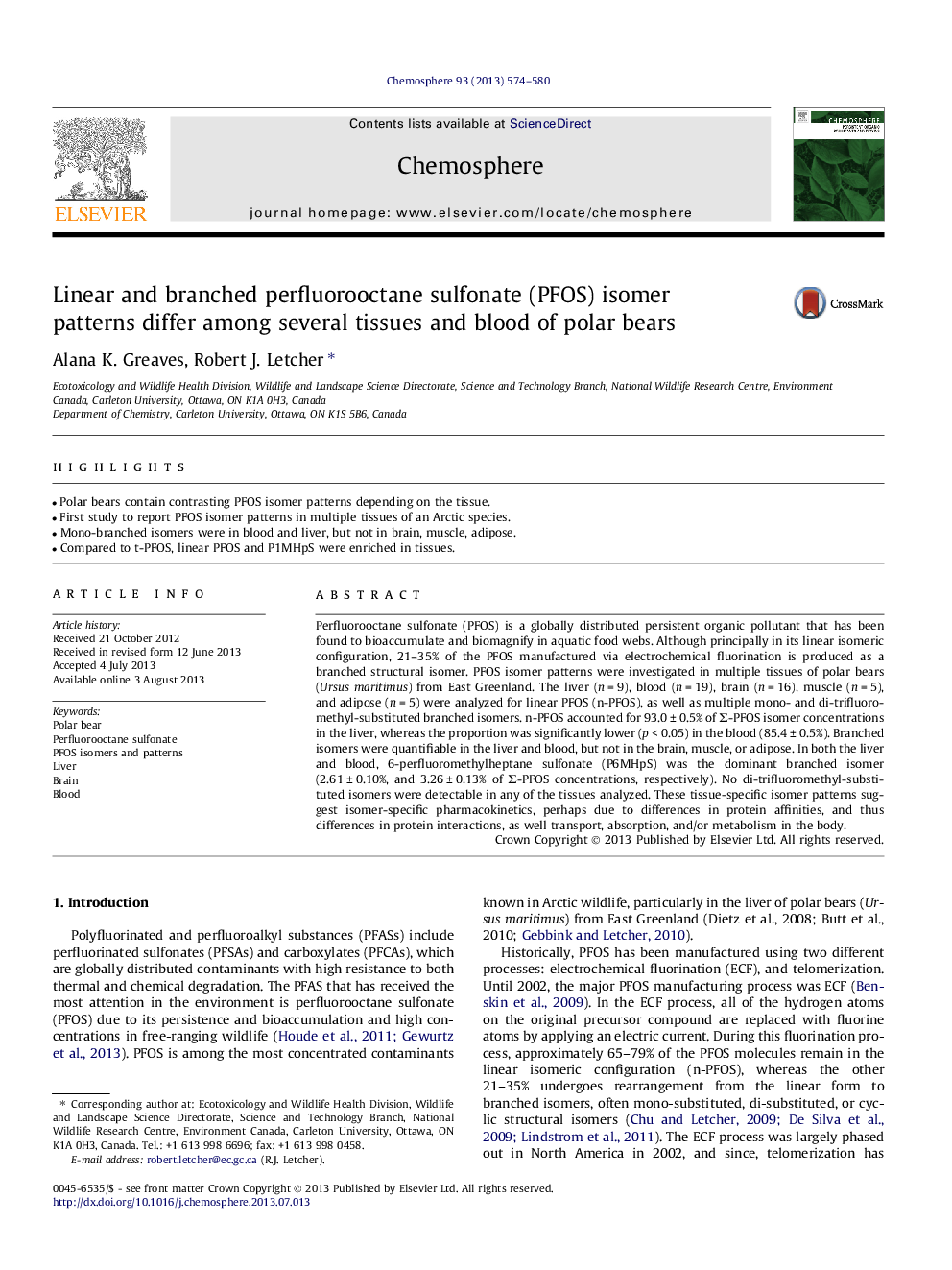| کد مقاله | کد نشریه | سال انتشار | مقاله انگلیسی | نسخه تمام متن |
|---|---|---|---|---|
| 4409173 | 1307466 | 2013 | 7 صفحه PDF | دانلود رایگان |

• Polar bears contain contrasting PFOS isomer patterns depending on the tissue.
• First study to report PFOS isomer patterns in multiple tissues of an Arctic species.
• Mono-branched isomers were in blood and liver, but not in brain, muscle, adipose.
• Compared to t-PFOS, linear PFOS and P1MHpS were enriched in tissues.
Perfluorooctane sulfonate (PFOS) is a globally distributed persistent organic pollutant that has been found to bioaccumulate and biomagnify in aquatic food webs. Although principally in its linear isomeric configuration, 21–35% of the PFOS manufactured via electrochemical fluorination is produced as a branched structural isomer. PFOS isomer patterns were investigated in multiple tissues of polar bears (Ursus maritimus) from East Greenland. The liver (n = 9), blood (n = 19), brain (n = 16), muscle (n = 5), and adipose (n = 5) were analyzed for linear PFOS (n-PFOS), as well as multiple mono- and di-trifluoromethyl-substituted branched isomers. n-PFOS accounted for 93.0 ± 0.5% of Σ-PFOS isomer concentrations in the liver, whereas the proportion was significantly lower (p < 0.05) in the blood (85.4 ± 0.5%). Branched isomers were quantifiable in the liver and blood, but not in the brain, muscle, or adipose. In both the liver and blood, 6-perfluoromethylheptane sulfonate (P6MHpS) was the dominant branched isomer (2.61 ± 0.10%, and 3.26 ± 0.13% of Σ-PFOS concentrations, respectively). No di-trifluoromethyl-substituted isomers were detectable in any of the tissues analyzed. These tissue-specific isomer patterns suggest isomer-specific pharmacokinetics, perhaps due to differences in protein affinities, and thus differences in protein interactions, as well transport, absorption, and/or metabolism in the body.
Journal: Chemosphere - Volume 93, Issue 3, September 2013, Pages 574–580